The science behind alcohol’s effect on the brain helped me understand how it had become a habit, and how I could retrain my brain to respond differently. Whether or not substance abuse and/or addiction run in your family, all people experience increased tolerance for alcohol the more and longer that they drink. People with a family history of alcoholism may be more prone to using alcohol as a coping Oxford House method because alcohol may have been used by parents or relatives.
What Recovery Looks Like

Staying in touch with friends and family is key, whether it’s face-to-face or over an online platform such as FaceTime. “Alcohol use itself, in addition to not eating well in times of increased alcohol intake, can suppress your immune system, so you’re less able to fight off infections,” she notes. In short, the functionality gains of alcohol use need to be weighed against the potential risks. Globally, alcohol is the most important risk factor for death and the burden of disease, as measured in disability-adjusted life years for people between 15 and 40 years old 204, 206.
Using Alcohol as a Coping Mechanism for Denial
- Patients need to be taught that these methods are not beneficial, and that will power must be supplemented with other methods of coping.
- Coming up with a treatment plan that includes support groups like AA (or SMART Recovery), seeing a therapist, aftercare groups, and a relapse prevention plan will give you a much better chance of fulfilling the goal of sustained recovery.
- Joanna Rog, a twenty-two-year-old from London, spoke to the charity about her use of alcohol as a coping mechanism.
The US National Survey on Drug Use and Health (NSDUH 2021) revealed that 47.5% of Americans aged 12 or older reported current (past month) alcohol use 29. European surveys revealed that in the general adult population of 15 to 64-year-olds, up to 77% per country showed current (last month) alcohol consumption 30. Of those who admitted to being current alcohol drinkers in the US, less than half were binge drinkers (45%), and ‘only’ about 12% reported heavy alcohol use 29. In the EU, 37% of adolescents (aged 15–16) and 19% of adults (aged 18+) reported heavy episodic drinking at least once a month 31.
College and Beyond: The Dark Side of Using Alcohol as a Coping Mechanism
Subjects are presented with pairs of matched alcoholic (beer) and non-alcoholic beverages for 500 ms (stimulus-onset asynchrony, SOA). Another SOA of 100 ms will be added to the paradigm in the proposed study to be able to capture automatic initial reactions (see 91). Stimuli were chosen based on expert ratings regarding similarity in color, shape and recognition. Subjects respond to a probe that appears behind either the alcoholic or the non-alcoholic beverage. The difference in reaction time between alcoholic and non-alcoholic stimuli is a measure of attentional bias towards alcohol-related cues. Although the dot-probe task is a widely used paradigm to measure attentional biases, there is debate about its reliability 92, 93.
3.2 Urge Specific Strategies (USS)
- It may reduce the conditioned inhibition of physical approach behaviour and enhance courage when sexual activity is initiated.
- However, there are also patients for whom alcohol abuse coincides with or follows the emergence of schizophrenia symptoms.
- If you drink in moderation to address stress, you may want to consider some other ways of coping.
- Moderate amounts of alcohol attenuate social inhibition and discomfort in social situations in adults in a similar way as in adolescents.
While a plethora of studies have revealed now how alcohol affects brain function 9, alcohol as a coping mechanism it might be important to consider that this picture reveals mainly the alcohol interaction with a healthy brain that is not under allostatic load. In a brain that gives rise to very pronounced personality traits, psychiatric disorders or that is under allostatic load 203, the neuropharmacological effects of alcohol can be largely altered and even be opposite to those in healthy brains 21, 86, 201, 202 (Table 1). Bipolar I disorder is characterized by manic episodes, while Bipolar II disorder involves hypomanic episodes and a major depressive episode.
The second goal of the current study was to examine coping mechanisms that may serve as a link between depression and alcohol use over time. Indeed, a notable strength of the current study was the inclusion of diagnostic data for depression and suicidality, as well as for AUDs in adulthood, underscoring that these transactions are related to serious and impairing diagnostic difficulties in adulthood. Patients with schizophrenia show a significantly higher incidence of alcohol use and abuse than people without psychiatric diagnoses 140, 141. Thereby, the relationship between alcohol use and schizophrenia is not unidirectional, but may contain several subgroups with distinct trajectories 142. In some patients, alcohol use precedes the first symptoms of schizophrenia 143. However, there are also patients for whom alcohol abuse coincides with or follows the emergence of schizophrenia symptoms.

